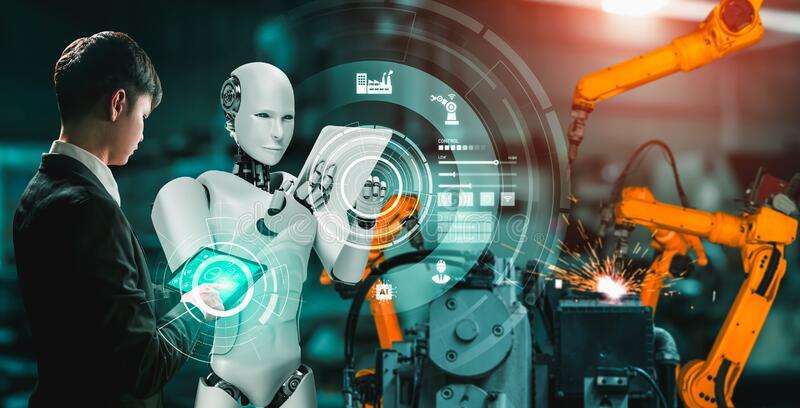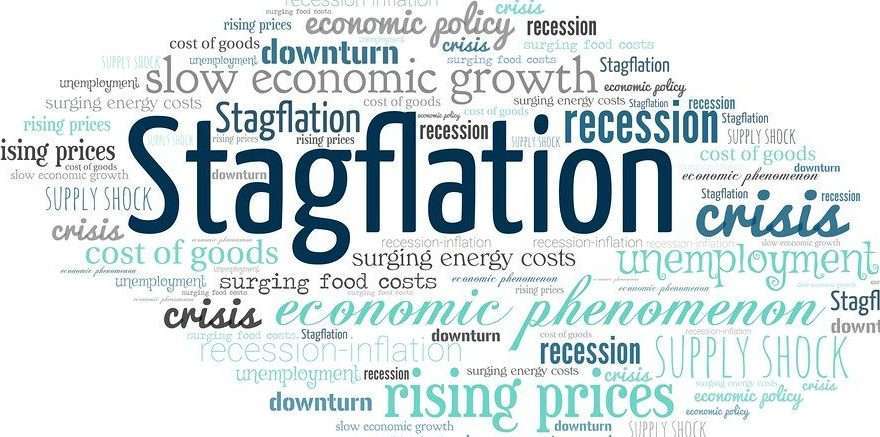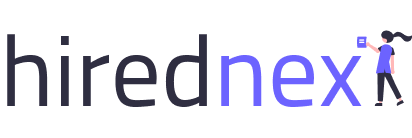“Future of IT Industry: A Powerful Tech Forecast 2023”

Future of IT Industry The IT industry is set to grow exponentially in the upcoming times. According to reports, the global IT industry is expected to reach $5 trillion by 2024. Emerging technologies like artificial intelligence, blockchain, and cloud computing will play a crucial role in shaping the future of the IT industry. Moreover, the COVID-19 pandemic has accelerated digital transformation, further boosting the demand for IT services. Future Trends of IT Industry: The IT industry is constantly evolving, with emerging technologies and trends shaping the future. Here are some of the upcoming trends in IT with examples and data: Artificial Intelligence (AI): AI is revolutionizing the way we work, communicate, and live. The global AI market is projected to reach $309.6 billion by 2026, growing at a CAGR of 39.7%. Examples include chatbots, virtual assistants, and image recognition software. Internet of Things (IoT): IoT refers to the network of interconnected devices that can communicate. The global IoT market is expected to reach $1.5 trillion by 2027, growing at a CAGR of 10.1%. Examples include smart homes, wearables, and industrial IoT. Cybersecurity: With the increasing threat of cyberattacks, cybersecurity has become a critical concern for organizations. The global cybersecurity market is projected to reach $248.26 billion by 2023, growing at a CAGR of 10.6%. Examples include firewalls, anti-virus software, and encryption. Cloud Computing: Cloud computing enables users to access computing resources over the internet. The global cloud computing market is expected to reach $832.1 billion by 2025, growing at a CAGR of 17.5%. Examples include SaaS, PaaS, and IaaS. Quantum Computing: Quantum computing uses quantum-mechanical phenomena to perform computations. The global quantum computing market is expected to reach $2.2 billion by 2026, growing at a CAGR of 30.2%. Examples include IBM Q System One, D-Wave Systems, and Honeywell Quantum Solutions. Edge Computing: Edge computing brings computing resources closer to the source of data, reducing latency and improving the user experience. The global edge computing market is projected to reach $15.7 billion by 2025, growing at a CAGR of 34.1%. Examples include autonomous vehicles, smart cities, and IoT devices. Robotic Process Automation (RPA): RPA uses software bots to automate repetitive and manual tasks, improving efficiency and productivity. The global RPA market is expected to reach $3.97 billion by 2025, growing at a CAGR of 33.6%. Examples include Automation Anywhere and Blue Prism. Virtual and Augmented Reality (VR/AR): VR/AR technologies enable immersive and interactive experiences, transforming the way we learn, work, and play. The global VR/AR market is projected to reach $125.35 billion by 2026, growing at a CAGR of 42.2%. Examples include Oculus VR, Microsoft HoloLens, and Magic Leap. 5G Technology: 5G technology enables faster and more reliable internet connections, improving the performance of IoT devices and enabling new applications. The global 5G technology market is expected to reach $667.90 billion by 2026. Blockchain: Blockchain technology provides a secure and transparent way to record and verify transactions, improving trust and efficiency in various industries. The global blockchain market is projected to reach $72 billion by 2026. Examples include Bitcoin, Ethereum, and Ripple. These top 10 upcoming trends in IT are set to transform how we live and work, creating new opportunities and challenges for businesses and individuals alike. Organizations must stay updated with these trends and embrace innovation to remain competitive in the ever-evolving IT landscape. Advantages of upcoming trends in IT: Increased efficiency and productivity: The adoption of new IT trends such as automation, machine learning, and artificial intelligence can help streamline processes, eliminate redundancies, and improve overall productivity. Improved decision-making: With the help of data analytics and business intelligence tools, organizations can make better-informed decisions based on real-time insights and predictive analytics. Enhanced customer experience: With the use of chatbots, virtual assistants, and other customer service automation tools, organizations can provide faster and more personalized customer service, leading to improved customer satisfaction. Increased security: The use of blockchain technology and other security measures can help protect against data breaches and cyber-attacks, ensuring that sensitive information is kept safe. Remote work capabilities: With the rise of remote work, the adoption of IT trends like cloud computing and collaboration tools can enable employees to work from anywhere, increasing flexibility and productivity. Disadvantages of upcoming trends in IT: Increased costs: Adopting new IT trends can require significant investments in hardware, software, and training investments or organizations with limited budgets may struggle to keep up with the latest technologies. Cybersecurity risks: As more devices and systems are connected through the Internet of Things, there is an increased risk of cybersecurity threats such as data breaches, hacks, and identity theft. It’s important businesses need to prioritize measures to protect against these threats. Privacy concerns: The collection and use of data by new IT trends such as artificial intelligence and machine learning can raise privacy concerns. Organizations must be transparent about their data collection practices and implement safeguards to protect customer privacy. Dependence on technology: While new IT trends can improve efficiency and productivity, they also create a dependence on technology. Organizations may struggle to operate without these technologies, leading to potential disruption in the event of system failures or outages. Impact on jobs: Automation and automating and digitizingead to job displacement for workers in certain industries. While new IT trends can create new jobs in areas like data analytics and cybersecurity, there may be a temporary mismatch between available jobs and displaced workers. Examples of potential disadvantages of upcoming IT trends include: Autonomous vehicles: While self-driving cars and other autonomous vehicles can offer benefits like improved safety and efficiency, they also raise concerns about job displacement for drivers and potential security risks in the event of system failures. Artificial intelligence: The use of AI technologies can lead to job displacement for workers in industries like customer service and data entry. There are also concerns about the ethical implications of AI and the potential for bias in decision-making algorithms. Virtual reality: While VR technologies can provide immersive experiences for users, they may also
“Stagflation a double whammy for the Economy”

Theme: World Bank’s President David Malpass warned about Stagflation in upcoming times. The term emerged during the 1973-1975 recession. What is Stagflation: Stagflation is an economic condition where there is a high rate of unemployment along with rising inflation and slow growth in the economy. It occurs when there is a simultaneous appearance of all these three aspects in an economy. Inflation drives prices up but purchasing power down, as spending the same amount of money gets you less value as prices go up. Which means economic growth has slowed dramatically or ground to a halt, with high unemployment, a drop in the Gross Domestic Product (GDP), slumping wages, and other factors. Stagflation = High unemployment + Inflation + Economic slowdown Causes of Stagflation: Example:- Disruption in the oil supply or a shortage of essential parts, which recently occurred during the Covid-19 pandemic with a disruption in the flow of semiconductors that slowed the production of everything from laptops to cars and appliances, etc. worldwide. – Inflation – Unemployment – Economic Growth Stagflation vs Inflation: Example of Stagflation: It is expensive and challenging to end from a social and financial perspective. History has only a handful of instances of this. The most significant one took place in the United States in the 1970s. The arrival of economic stagnation in the 1970s was blamed on the US Federal Reserve’s unsustainable economic policy during the boom years of the late 1950s and 1960s. In the 1960s, the Fed took action to maintain low unemployment and increase overall demand for goods and services. However, the decade’s very low unemployment rate resulted in what is known as a wage-price spiral. The 1973 OPEC oil embargo also contributed to the unfavorable economic occurrence in the United States. The country’s industries were harmed by extremely high oil costs and shortages. New lows in demand resulted in decreased industrial output. Cure for stagflation: Conclusion: Growth is being negatively impacted by the conflict in Ukraine, China’s curfews, and supply-chain problems, as a result of stagflation which makes it difficult for businesses to operate. Earnings and expenses are both rising. Meanwhile, slow or declining economic development and high unemployment may lead sales to stagnate or fall.It allows management to carefully assess their business and make changes to strengthen it. Productivity can be increased by businesses using time and money-saving technology. They may reconsider their pricing strategy, consider acquiring or merging with competitors, and bolster their balance sheet. Companies that take such measures to survive stagflation may find themselves in a strong position for growth when the economy improves. Read more: https://www.economicshelp.org/blog/glossary/stagflation/ Also read: https://hirednex.com/rise-of-gig-economy-pros-cons-and-future/
